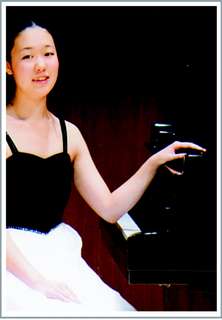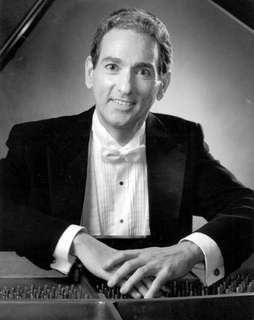|
Back
Société Nationale de Musique Redux New York
Tenri Cultural Institute
05/15/2010 -
Live Music by Living Composers, presented by The Leschetizky Association:
Kumihiro Nakamura: Prelude (World Premiere)
Tomohiro Moriyama: The Ball Is Tomorrow
Joseph Fennimore: Romances 10, 11 & 12
Ned Rorem: Three Songs (Early in the Morning; Clouds; The Lovely Hudson) – Sonata Number 3
William Schimmel: Fromage Dangereux – Tango for Solo Piano
Katherine Hoover: Dream Dances
Lowell Liebermann: Sonata No. 3
Mary Feminear Thomas (Soprano), Natsumi Kuboyama, Jeffrey Middleton, Alison Thomas, Terry Eder, Slavina Zhelezova, Nanette Kaplan Solomon, William DeVan (pianos)

N. Kuboyama (© Tenri Cultural Institute)
Some 95 years ago, groups like the “Société Nationale de Musique” or the “Society for Private Performances” would present, as a matter of course, live music by living composers. The barely-known would be introduced to elite audiences, the famed, like Bartók, Stravinsky, Webern and Schoenberg would introduce their own most recent works. Audience reactions at those gatherings were as important as newspaper reviews today.
It was difficult to tell how elite the audience was in the Tenri Cultural Institute last night, but the concert hall, decorated with happily gaudy pictures by Soyeun Jeong, graced by two of the composers, and performed by some top-rate pianists, made it certainly an occasion to remember. Three of the composers–Rorem, Liebermann and Schimmel–are well-known. The four others were less known but certainly talented.
The first pianist, Natsumi Kuboyama, played a pair of works from her homeland, but the contrasts were enormous. Kumihiro Nakamura’s Prelude an enormously difficult work, had a world premiere last night, and Ms. Kuboyama played it effortlessly. The first two minutes could have been written by late Scriabin, but soon the harmonies thickened, any signature key disappeared into the mist, and the work became a sculpture of atonal complexity, finally whispering down to the original Scriabin harmonies. It was short, but always fascinating.
Tomohiro Moroyama’s The Ball is Tomorrow is a straightforward waltz in the Brahms style. It whirled along perfectly with the sweetest little bump at the end as it changed keys for two final measures.
Joseph Fennimore is famed as a pianist, but has written some 15 Romance works. Apparently, they are most varied, but these three, lyrical, moderate in tempo and deceivingly simple (except for number 12) were pleasantries, made for any good pianist.

M. Femminear Thomas (© Shelley Laband)
Ned Rorem needed no introduction, and soprano Mary Feminear Thomas gave a resounding (perhaps too resounding for the vibrant hall) performance of three songs. Granted these, and the Third Piano Sonata were written many years ago, but Mr. Rorem showed (in the famous Shaker lyrics) how he has the gift to be simple. Compared to the other works, the three songs were simple, very American, and very expressive.
His Sonata was given a fine reading by Terry Eder. Where the songs were totally American, in the Copland spirit, the Sonata is equally French, only the final toccata showing a bit of American syncopation. But Ms. Eder saved her most expressive moments for the second movement. Yes, the theme was in that Rorem song style. But now began a series of variations which became faster and faster, suddenly returning to the beginning adagio tempo. Mr. Rorem, alas, has been “type-cast” for his songs. But listening to his opera, Our Town, the Concerto for Two Violins, or this really intriguing sonata, one realizes what a splendid conservative inspired composer he has always been.
The following Fromage Dangereux sounds like a title by Erik Satie, but it is one of the tangos written by William Schimmel, who introduced the work. He gave a history of the piece, but also spoke of the “three shades of blue” which the tango exhibits. The last is “We are all going to die…no way out….but we should go down and out looking our best.”
The tango was played with percussive finality by Slavina Zhelezova, very exciting trilling on a single note, barely using the pedal. Mr. Schimmel, a world-famous accordion virtuoso, could play those notes easily on his instruments with the usual accordion shake. On a piano, the impossible became possible and fascinating.
(Then again, perhaps Fromage Dangereux was Mr. Schimmel’s rejoinder to J.S.Bach’s Cheeses, Joy of Man’s Desiring.)
Katherin Hoover’s Dream Dances were like a languorous rondo, the one theme leading to a series of piano meditations which were composed well, played well, and, like dreams, evocative during the music, somewhat forgettable afterwards.

W. DeVan (© Marc Bondarenko)
Lowell Liebermann was in the audience, but decided to let his music speak for itself. That it did, with William DeVan, author, teacher and performer, giving the difficult 16-minute work, his utmost.
Without any belittling of the pervious works, Mr. Liebermann’s Third Sonata had a sigular depth, a complexity and–dare I say it?–an importance, even at this, my first hearing. It begins ferociously, it ends with presto quickness, and in between is music that goes from melody to madness with hardly a stop. The most lyrical passages would stop with sudden explosive chords. At the most lyrical passages, suddenly come explosive chords. At times, we would go into a convoluted fugue, this stopped to continue with the melody again.
The end had a frantic Bartók-style dance, but even this dance seemed dark, driven by other devils. Arnold Schoenberg once wrote, “It is impossible for a human being to have only one thought at a time.” Mr. Liebermann showed that music too can present a multiplicity of emotions within the confines of his own personal logic.
Harry Rolnick
|